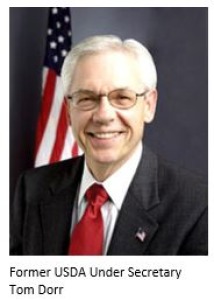As someone who has been engaged in many farm policy debates, I find the current conversations regarding the need for incremental farm bill changes to be disheartening.
The underlying assumption seems to be that U.S. agriculture should continue to consume itself with producing commodity agriculture products – and our policies should reflect some version of what we’ve been doing for most of the last nine decades.
But the reality is that agriculture is changing dramatically and there are substantial new food and agriculture markets being defined in emerging and developing parts of the globe. Why not look ahead and develop policies that help position U.S. agriculture as a value-added market leader?
A major 2012 study produced by the U.S. Grains Council, in conjunction with the U.S. Foreign Ag Service entitled FOOD 2040, and a similar study released in 2015 by Japanese interests, both clearly indicate a doubling of global food expenditures from 2011 to 2020. These food expenditures are expected to increase from $3.6 T USD to $7.3 T USD.
The world food market has changed. It used to demand commodities to process into consumable products for the masses. Now the food market is demanding high-quality, defined, traceable, and secure food. If we consume ourselves with protecting decades old commodity programs, we’re doomed to marginal returns and a renewed diminishment of rural America. This is not necessary! In fact, it reflects an abhorrent lack of responsibility and self-respect within the industry.
Leaders must buck-up, bite the bullet, and acknowledge where the new food and agricultural markets are emerging and what they want. Then we must redefine our products for a global market place. We did it once with ethanol. Yet we rebel against the use of technology tools which provide the access to new systems of trust for high-quality food products demanded in these emerging economies. This should and can not continue.
We are not developing the policies, or the financial and value-added market-based risk management strategies, needed to compete for these new opportunities. Producers simply assume that supply, demand, and production risk is a government responsibility. It has worked since the 1930’s, why consider changes now?
If nine decades…yes, “NINE DECADES” of the same type of commodity-focused agriculture policy does not merit “revolutionary change”, I don’t know what will stimulate such change or when it might occur.
We should be better than that.
About the Author: Tom Dorr is a former USDA Under Secretary for Rural Development and former CEO of the U.S. Grains Council
#30


